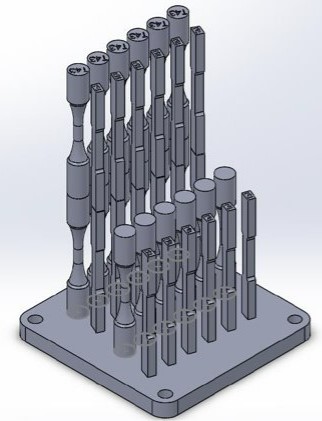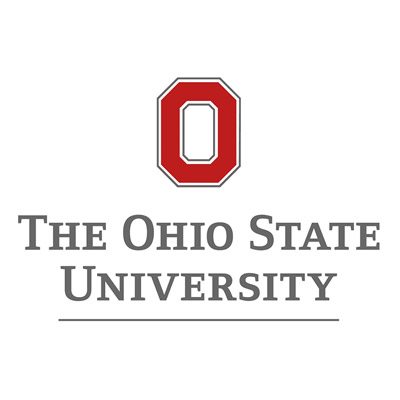


Build interruption tensile samples
Problem
One of the challenges that laser powder bed fusion (LPBF) must overcome is that despite increasing levels of machine complexity and automation, the printing process is not always turnkey. The printing process can stop for many reasons such as poor geometry design, machine error, powder shortage, filter changes, inert gas leaks, re-coater issues, power loss, and other reasons. Because of the high cost of LPBF parts, operators will try to restart the build. For reactive materials such as titanium and aluminum, a build stop combined with opening the machine can allow oxygen and moisture to contaminate the process and cause serious defects such as a lack of fusion.
Objective
The overarching goal of the project was to quantify the effects of build interruptions on AM part mechanical properties through in-process monitoring and mechanical testing of finished parts using different build materials. Specific objectives were to produce builds that would simulate a build interruption and a build without an interruption, and perform mechanical testing on all interrupted builds, comparing the data with non-interrupted builds.
Technical Approach
The Ohio State University (OSU) led the effort which included Northrup Grumman Corporation and Honda Aero, Inc. The project team looked at four scenarios that can happen during LPBF. The first was when a build stop occurs but is caught quickly and the machine is easily restarted. The second scenario was an overnight stoppage. The third scenario was when the machine is interrupted for multiple nights (such as over a weekend). The final scenario that was simulated was that the machine stopped, the door was opened, and a repair attempt was made. To simulate these four scenarios, a build setup was produced with tensile and fatigue bars. OSU produced five builds on an Open Additive Panda in Ti-6Al-4V. Northrop Grumman provided two AlSi10mg builds using an EOS M-290 and Honda Aero provided two IN718 builds using an EOS M-400-4.
Tensile testing was performed at the OSU Center for Design and Manufacturing Excellence (CDME) where specimens were pulled until failure at a rate of 0.1mm/min. A fatigue specimen from each build was taken and sent for metallography, and the reduced section was sectioned and polished. During each build, tomography and recoater data were collected as part of the in-situ monitoring analysis.
Accomplishments
The team was able to effectively quantify the effects of build interruptions on AM part mechanical properties through in-process monitoring and mechanical testing of finished parts. The initial results indicated that in both IN718 and AL10SiMg, a build interruption did not seem to have a significant effect on mechanical properties or microstructure. In Ti-6Al-4V the ultimate tensile strength did show a small decrease, but more work needs to be done to understand its effects on fatigue strength. CT scanning did not exhibit additional defects or significant changes such as witness lines at the interruption point. Metallography did not reveal changes to microstructure or additional defects that were directly caused by the build interruption. The recoater images showed good powder coverage of the parts and no defects in the bed. Tomography images were also analyzed for potential defect sites and the pixel grey values were analyzed. No discernable pattern was observed before and after the interruption point and no significant changes were observed between the interrupted and non-interrupted builds for the pixel values. The tomography images did indicate more potential defect sites in the aluminum builds. The IN718 builds exhibited potential defect sites before and after the interruption.
Project Participants
Project Principal

Other Project Participants
- Northrop Grumman Corporation
- Honda Aero, Inc.
Public Participants
- U.S. Department of Defense
